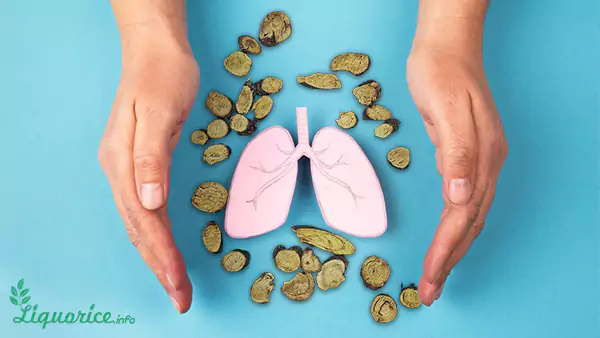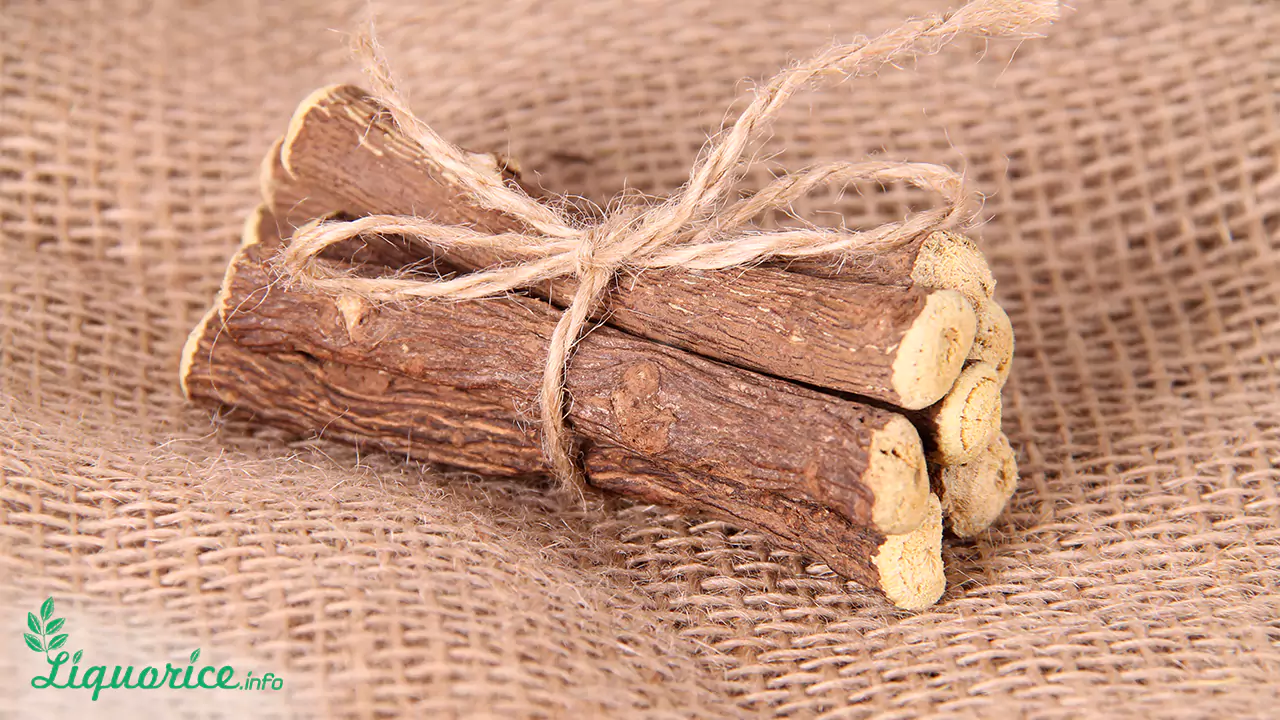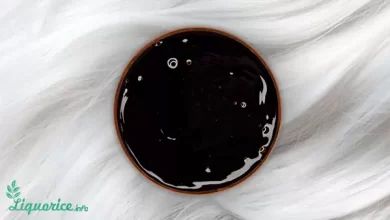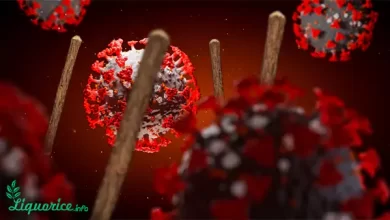
Background
The respiratory system is a set of tissues and organs that help us breathe. These organs are blood vessels, lungs, airways, muscles etc. They all work to get oxygen from the air and send carbon dioxide out. The exchange of oxygen and carbon dioxide are done through the pipes called airways.
Some diseases disrupt the function of this system. The most common respiratory diseases are:
Lung cancer, Lung infection, Inflammation in airways, Asthma, Bronchitis and other ones.
There are various treatments for these problems including chemical and herbal remedies. Among herbal remedies we can refer to licorice.

In this article, Sepidan Osareh Jonoob Co. presents some information about:
How licorice affect our respiratory system?
What is licorice?
Licorice is a perennial herb that has been used since ancient times in medicine. It has been mainly used to treat peptic ulcers, indigestion, acid reflux, cough, heartburn, sore throat, respiratory disorders, bacterial and viral infections, eczema, psoriasis and some other diseases.
Licorice (or liquorice) is a wild plant which grows in Europe, Asia including Iran and Africa. The technical name of licorice is “Glycyrrhiza Glabra”.
Based on research on licorice structure, there are 20 triterpenoids and nearly 300 flavonoids in licorice. Triterpenoids are natural glycosides which have a large variety in bioactive.
Flavonoids with polyphenolic structure are found in flowers, tea leaves, grains, fruits, vegetables, roots, etc. These compounds have anti-oxidant, anti-inflammatory and anti-cancer features. Moreover, they regulate the functions of cellular enzymes.
Minerals such as phosphorus, calcium, iron, magnesium, potassium and etc. are found in this plant.
Licorice has been widely used in herbalism and traditional medicine for thousand years. Its positive influences on our health are considerable. At first in Europe, it was used as an herbal remedy for dry cough, asthma, and pectoral diseases. In Persian, Chinese, Indian, Greek traditional medicine, licorice was assumed an effective herbal treatment for heartburn, cough, eczema, sore throat, hair loss, bronchitis, canker sores, and so on.
Glycyrrhizin is an active compound in licorice. It is 30-50 times sweeter than sugar.
Licorice extract is rich in antioxidants. Based on studies, an active antioxidant (Licochalcone A) is the main ingredient in licorice root extract.
How Licorice Affects Our Respiratory System?
Licorice acts as an expectorant, removing extra mucus from airways.
A few studies show that Glycyrrhizic, Asiatic and Oleanolic acids in licorice root can slow the progress of bronchitis. Licorice root has been widely used to treat bronchial asthma for many years.
There are different kinds of bacterial and viral infections. One research has shown that licorice root at least has two elements that have antiviral effects called: GL and GA. They weaken virus activities like virus gene and its replication. This plant also contains flavonoids that treat bacterial infections.
Based on Sepidan Osareh Jonoob company’s surveys, in cough syrups and lozenges, licorice is used to relieve sore throat and reduce cough.
Glycyrrhizin in licorice binds to viral fusion proteins and inhibits the virus entrance to host cells. This plant also contains flavonoids that treat bacterial infections.
Glabridin, another component of licorice root is anti-fungal. This element slows down the growth of bacteria and virus.
Using licorice lozenges may soothe inflammation in throat. Licorice in the form of tea, lozenge, spray is very common to soothe sore throat.
Licorice root has been widely used to treat bronchial asthma for many years. One study on mice showed that glycyrrhizin can improve all established chronic histopathologic changes of lung.
Airway inflammation is a common problem in respiratory related diseases such as asthma. Licorice has some anti-inflammatory compounds that are helpful in treatment of these sicknesses.
Licorice defends our cardiovascular and lungs against viral inflammation. It inhibits DNA and RNA virus. It has this ability to destroy senescent cells since it is anti-aging. The main reason of cytokine storm in obese or elderly people suffering from Covid-19, is gathering of senescent cells. It leads to severe Corona or death. Previously in traditional Chinese medicine, it was proven that licorice is effective in improvement of SARS-COV.
Licorice intake in these patients reduced the replication of SARS virus. Furthermore, it is shown that licorice extract has antiviral activities against respiratory syncytial virus in human.
Flavonoids, triterpenoids, and saponins in licorice are anti-viral. It is also proven that glycyrrhizin can inhibit H1N1 and H5N1 influenza through disrupting virus attachment to the cells

Written and Edited by: Meysam Shokripour (Sepidan Osareh Jonoob Co.)
References : iranlicorice.com





